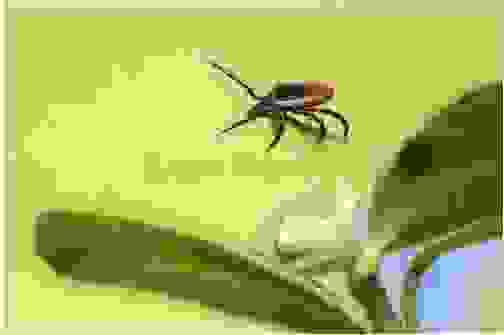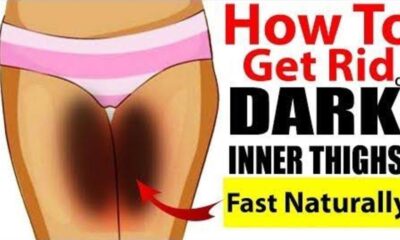When it comes to your beloved canine companion, safeguarding them from insects and pests is paramount. In this guide, you’ll discover essential tips and techniques to protect your dog from bothersome bugs and harmful pests. By following these strategies, you can ensure your furry friend stays healthy, happy, and pest-free all year round.
Preventative Treatments
Preventative treatments are crucial for protecting dogs from insects and pests because they help ward off a range of health issues such as flea infestations, tick-borne diseases, and heartworm. By administering these treatments regularly, you can avoid the discomfort and potential health risks associated with pests. These treatments often come in forms like topical applications, oral medications, and collars infused with insect-repellent agents.
Image source: https://pixabay.com/photos/ixodes-ricinus-castor-bean-tick-tick-5261836/
To perform preventative treatment, start by consulting your veterinarian to choose the right product for your dog’s specific needs. Find an adequate tick repellent for your dog and apply the topical solution between the shoulder blades if using a spot-on treatment, or administer the oral medication according to the package instructions. For collars, ensure they fit snugly but comfortably. Regular adherence to these preventative measures will keep your furry friend protected and healthy.
Perform Regular Checks
Regular checks are vital for protecting dogs from insects and pests as they enable early detection of any issues before they become severe. Regularly examining your dog helps identify fleas, ticks, and other pests that could lead to health complications like Lyme disease or flea allergy dermatitis. Early detection allows prompt treatment, ensuring minimal discomfort and a faster recovery for your pet.
To perform regular checks, start by inspecting your dog’s coat and skin, especially around the ears, neck, and underbelly, where pests tend to hide. Use a fine-toothed comb to part the fur and look closely for any signs of pests or abnormal skin conditions. Pay attention to any excessive scratching, biting, or licking, as these could be indicators of pest infestations. Consistently performing these checks ensures your dog remains healthy and pest-free.
Maintain Good Hygiene
Keeping your furry companion clean and well-groomed is a crucial aspect of protecting them from insects and pests. With the right products and techniques, you can minimize the risk of your dog attracting pests like fleas, ticks, and mites. Here are some things you need to do:
Good hygiene helps remove dirt, debris, and potential pest eggs from their coat and skin. Regular grooming reduces the chances of infestations, keeps the skin healthy, and makes it easier to spot and address potential issues early, ensuring a healthier, happier pet.
Limit Exposure
Insects and pests like fleas, ticks, and mosquitoes often inhabit tall grasses, wooded areas, and stagnant water. Avoiding these areas, especially during peak pest activity times such as dusk and dawn, minimizes the chances of your dog encountering pests. What’s more, maintaining a clean and pest-free home and yard is essential.
Regularly mow the lawn, remove standing water, and use pet-safe insecticides if necessary. By being mindful of where your dog roams and taking steps to control their environment, you can significantly reduce the risk of insect and pest infestations, ensuring your dog’s well-being.
Keep Your Home and Yard Clean
A clean home and yard are critical for protecting dogs from insects and pests because these environments prevent the breeding and hiding of harmful critters. To maintain a pest-free area, regularly vacuum carpets, wash pet bedding, and clean up any food spills promptly. Outdoors, mowing the lawn, trimming shrubs, and removing leaf litter reduce places where pests can thrive.
Ensure garbage is sealed and that there are no standing water sources that could attract mosquitoes. Using pet-safe pest control products can also help manage infestations. Keeping your home and yard clean creates a healthy environment for your dog, minimizing the risk of fleas, ticks, and other pests that could pose health threats.
Consult Your Veterinarian
Consulting your veterinarian is essential for protecting your dog from insects and pests because they provide expert advice tailored to your pet’s specific needs. Vets can recommend the most effective preventative treatments, identify potential issues early, and create a comprehensive pest management plan. They can also address any adverse reactions to treatments promptly.
When visiting your vet, ask about the best preventative options for your dog’s breed, age, and health condition. Inquire about the signs of common pest-related illnesses and the appropriate actions if your dog gets infected. Further, request advice on maintaining a pest-free environment and any necessary follow-up visits. Regular vet consultations ensure your canine stays safe, healthy, and happy.
Image source: https://pixabay.com/photos/dog-pet-canine-animal-fur-snout-3277416/
By implementing these strategies, you can effectively shield your canine from harmful insects and pests. Stay proactive by maintaining good hygiene, performing regular checks, and consulting your veterinarian. Remember, a clean home and limited outdoor exposure are key. Your diligent efforts will ensure your furry companion remains healthy, happy, and pest-free.


 SPORTS10 months ago
SPORTS10 months ago
 METRO10 months ago
METRO10 months ago
 IN-THE-NEWS11 months ago
IN-THE-NEWS11 months ago
 HEALTH & LIFESTYLE6 months ago
HEALTH & LIFESTYLE6 months ago
 SPORTS10 months ago
SPORTS10 months ago
 METRO10 months ago
METRO10 months ago
 METRO11 months ago
METRO11 months ago
 METRO6 months ago
METRO6 months ago



